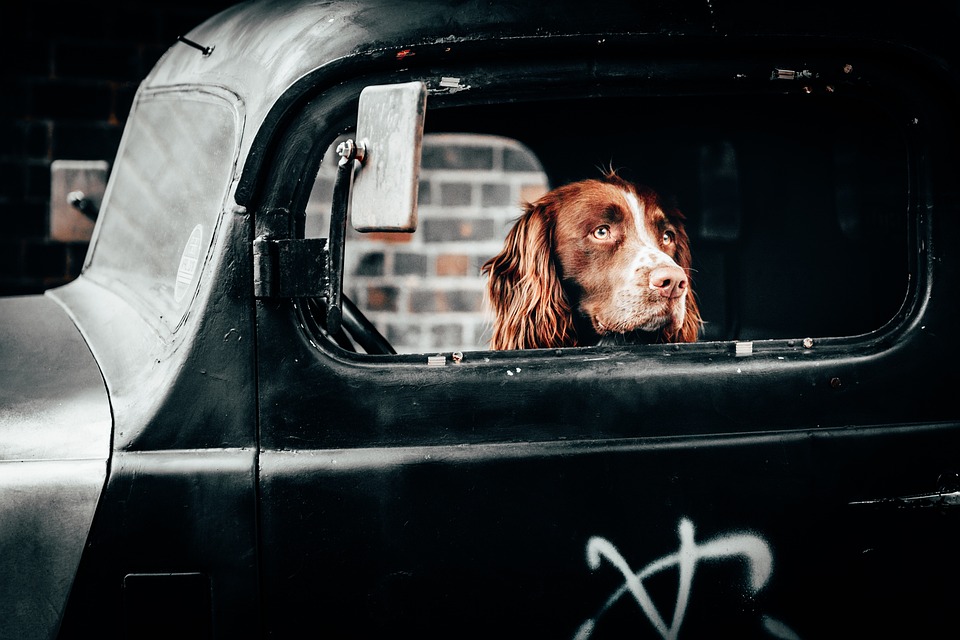**DISCLAIMER: This article is for informational purposes only and should not be considered as professional advice. Always consult with a veterinarian or certified dog behaviorist for personalized guidance and recommendations.**
As pet owners, we understand that our furry friends can sometimes experience anxiety. Just like humans, dogs can become overwhelmed or stressed in certain situations, leading to anxious behavior. Thankfully, there are several effective techniques you can use to help calm your anxious dog. In this article, we will explore seven proven methods that can provide relief for your furry companion.
1. **Create a Safe and Secure Environment**
One of the first steps in calming an anxious dog is to create a safe and secure environment for them. Dogs feel most comfortable when they have a designated space that they can retreat to when feeling anxious. Set up a cozy spot in your home, such as a crate or a specific room, where your dog can relax and feel protected. Make sure this area is quiet and away from any potential triggers that may cause anxiety.
2. **Establish a Consistent Routine**
Dogs thrive on routine and structure, and having a consistent daily routine can help alleviate anxiety. Establish set times for feeding, walks, playtime, and rest. By following a predictable schedule, your dog will feel more secure and know what to expect. This stability can significantly reduce anxiety levels and create a sense of calm.
3. **Provide Physical and Mental Stimulation**
Regular exercise and mental stimulation are essential for a dog’s overall well-being. Engaging in physical activities like daily walks, playing fetch, or participating in agility training can help reduce anxiety by releasing excess energy. Mental stimulation, such as puzzle toys or interactive games, can also keep your dog’s mind occupied and prevent anxious thoughts from taking over.
4. **Utilize Calming Tools and Supplements**
Sometimes, despite our best efforts, our dogs may still experience anxiety. In such cases, it can be helpful to use calming tools or supplements. Thundershirts, which are snug-fitting vests, provide gentle pressure that can help soothe anxious dogs. Additionally, natural supplements like chamomile or CBD oil can have a calming effect on your dog’s nervous system. However, it’s crucial to consult with your veterinarian before introducing any new supplements to your dog’s routine.
5. **Practice Deep Breathing and Relaxation Techniques**
Believe it or not, dogs can benefit from deep breathing exercises just like humans. When your dog is feeling anxious, try gently stroking their fur while using slow and deep breaths yourself. This can help your dog sync their breathing with yours, promoting relaxation. You can also explore other relaxation techniques such as playing calming music or using aromatherapy with lavender or chamomile scents, known for their soothing properties.
6. **Use Positive Reinforcement and Training**
Positive reinforcement training techniques can be incredibly effective in managing anxiety in dogs. Rewarding desired behaviors and redirecting anxious behaviors can help your dog associate positive experiences with situations that typically trigger anxiety. Training your dog to perform simple commands like “sit” or “stay” can also provide them with a sense of control and confidence in stressful situations.
7. **Consider Professional Help**
If your dog’s anxiety persists or becomes severe, it may be beneficial to seek professional help from a veterinarian or a certified dog behaviorist. These experts can assess your dog’s specific needs and develop a personalized plan to address their anxiety. They may recommend additional therapies, such as desensitization training or medication, depending on the severity of the anxiety.
**FAQs (Frequently Asked Questions)**
**Q: How can I tell if my dog is anxious?**
A: Dogs can exhibit various signs of anxiety, including excessive barking, panting, trembling, pacing, destructive behavior, loss of appetite, or withdrawal from social interactions. However, it’s essential to consult with a veterinarian to rule out any underlying health issues that may be causing these behaviors.
**Q: Can I use over-the-counter medication to calm my dog?**
A: It is strongly advised against using over-the-counter medications without consulting with a veterinarian first. Some human medications can be toxic to dogs, and dosages must be carefully determined by a professional.
**Q: Are there any long-term solutions for anxiety in dogs?**
A: Long-term solutions for anxiety in dogs often involve a combination of behavioral modification, training, and, in some cases, medication. Working closely with a veterinarian or a certified dog behaviorist can help you develop a comprehensive plan to manage your dog’s anxiety effectively.
**Q: How long does it take for these calming techniques to work?**
A: The effectiveness of calming techniques can vary from dog to dog. While some dogs may respond quickly, others may require more time and patience. Consistency and repetition are key, and it’s essential to give your dog sufficient time to adjust and respond positively to the techniques you are implementing.
By implementing these seven effective techniques, you can help your anxious dog find relief and lead a happier, calmer life. Remember, each dog is unique, so it may take some trial and error to find the methods that work best for your furry friend. Don’t hesitate to reach out to professionals if needed, as they can provide invaluable guidance and support throughout the process.









